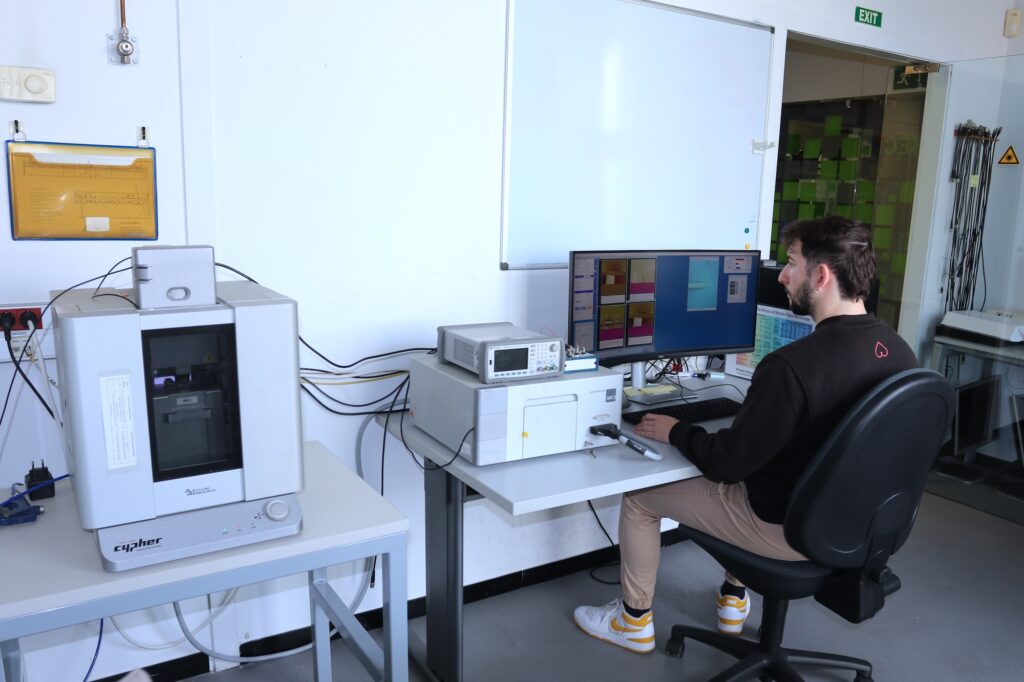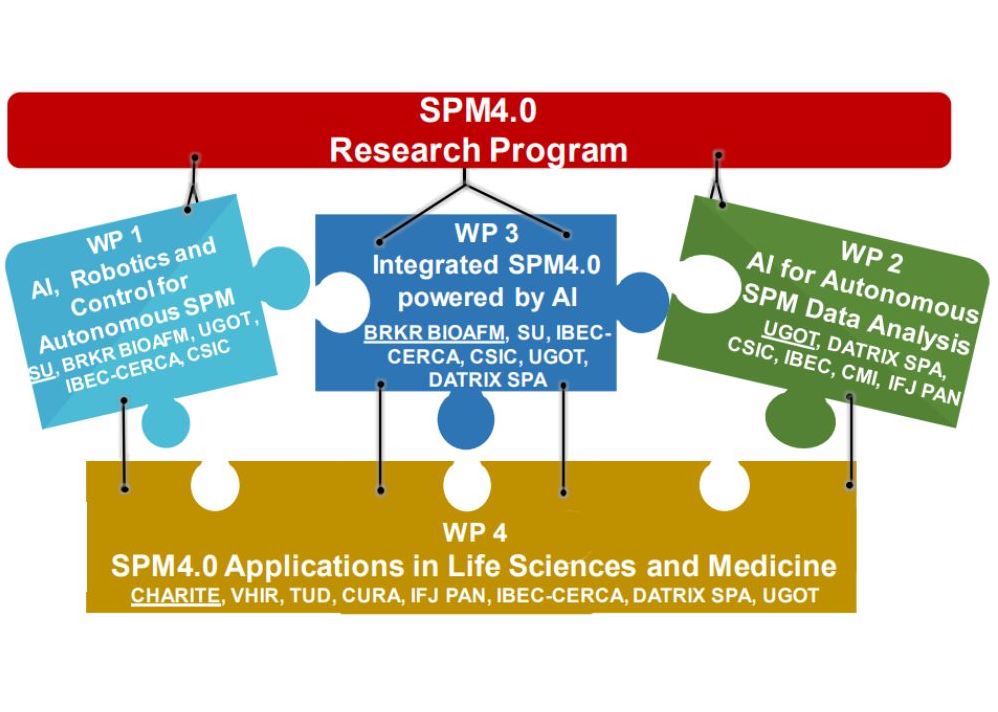Project
Summary
The objective of the SPM4.0 Doctoral Network is to train the next generation of researchers in the science and technology of autonomous Scanning Probe Microscopes powered by Artificial Intelligence. We aim to achieve real time and sub-10 nm structural and functional (mechanical and electrical) imaging of complex biological samples in physiological conditions and to boost its wide adoption in the Life Sciences and Medical sectors, overcoming the limits of SPMs for biomedical applications.
The ultimate consortium goal is to drive the widespread adoption of SPM4.0 technologies across public and private research centers, as well as industrial and metrology institutions. Additionally, the project seeks to explore new frontiers in the Life Sciences and Medical sectors, including label-free nanoscopic cell imaging, disease diagnosis, and drug nanocarrier development, positioning Europe as a global leader in these fields.

Research Program: AI-Powered SPM4.0 Objectives
The Research program includes the following specific objectives, all of them uniquely powered by Artificial Intelligence:
I. Autonomous ROI Identification and Probe Control:
The autonomous identification of Regions of Interest (ROIs) in cellular and biomolecular samples imaged by optical microscopy and SPM, along with autonomous driving of the probe, setting optimal scan parameters for high-quality, high-resolution images of living cells and biomolecules under physiological conditions.
II. On-the-Fly Structural, Mechanical, and Electrical Imaging:
Autonomous real-time production of structural, mechanical (e.g. Young’s modulus, viscoelastic properties), and electrical (e.g. charge, conductivity) images derived from observables such as cantilever deflection and oscillation amplitude.
III. Tip Artifact Detection
Automated detection and correction of tip artifacts during scanning.
IV. AI-Integrated Multiparametric SPMs:
The development of two AI-powered multiparametric SPMs, one for cellular and one for biomolecular applications, with user-friendly interfaces for autonomous operation and real-time multiparametric imaging of biological samples.
V. AI-Powered SPM4.0 Data Processing Software:
Development of a software tool for autonomous batch processing of large datasets, focusing on the analysis of topographic, mechanical, and electrical data obtained from cells and biomolecules.
VI. Addressing Life Science Challenges:
Applying SPM4.0 technologies to tackle open problems in Life Sciences and Medicine, including cancer diagnostics, protein-DNA binding site identification, label-free tracking of nanodrug carriers, nanoparticle characterization for gene therapy, and medical elastography.
In order to achieve these goals, the Research Program of the SPM4.0 Network is organized in four research Work Packages
Development of AI, robotics, and control systems for autonomous operation of multiparametric SPMs.
Creation of AI systems for stream and batch analysis of multiparametric SPM images, with a focus on biomedical applications.
Integration of AI and robotics into autonomous functional multiparametric SPMs for imaging living cells and biomolecules.
Application of SPM4.0 technologies in Life Sciences and Medicine, targeting advanced diagnostic and therapeutic solutions.
Additionally, three work packages (WP5-WP7) will deal with recruitment and training, management dissemination and exploitation, and ethics.

